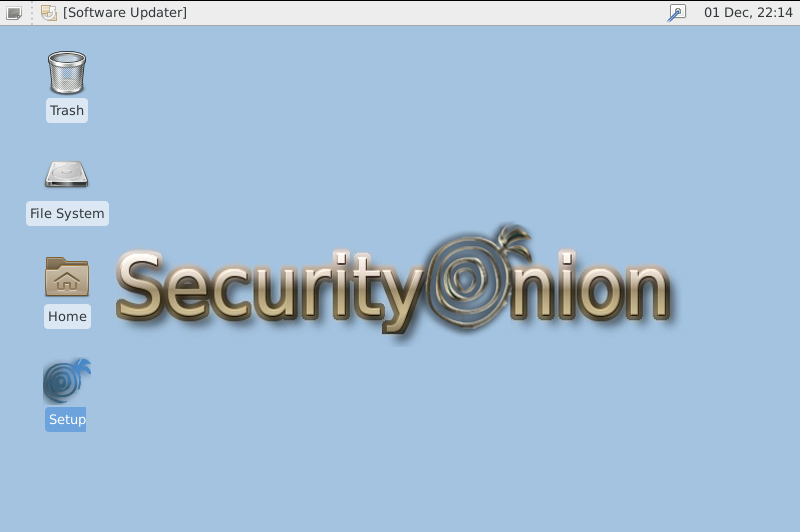Security Onion Configuration in VMware
Security Onion is a Linux distro for intrusion detection, network security monitoring, and log management. It’s based on Ubuntu and contains Snort, Suricata, Bro, OSSEC, Sguil, Squert, ELSA, Xplico, NetworkMiner, and many other security tools. The easy-to-use Setup wizard allows you to build an army of distributed sensors for your enterprise in minutes!
Security Onion effortlessly merges collectively two main roles i.e. complete packet capture another Network-based [NIDS] and host-based intrusion detection systems [HIDS].
There is some Analysis tool are available that also work as a real-time program by capturing network packets.
NIDS: Snort or Suricata and Bro as network intrusion detection for fingerprints and identifiers that contest identified malicious, abnormal otherwise suspicious traffic.
HIDS: Security Onion offers OSSEC for host-based intrusion detection.
Sguil: It is the crucial Security Onion tool for network security analysts. Sguil’s main component is an intuitive GUI that gives access to real-time events, session data, and raw packet captures.
Squert: It is a web application that is used to query and view event data stored in a Sguil database.
ELSA: Enterprise Log Search and Archive is a three-tier log receiver, archiver, indexer, and web frontend for incoming syslog.
For more details visit here
Let’s start!!
Create VM for Security Onion installation
Open VMware, select option “creates new virtual machine”, now for install from wizard select second option:
Install the disc image file in order to browse the iso file of security onion.
Then click on next.
Now select 2nd option “Linux” for the guest operating system and select version “Ubuntu”. Then click on next and next as per your requirements.
Explore custom hardware for making the following changes:
Select bridges connection and enable the checkbox for replicate connection for network adapter setting. Similarly, add one more network adapter and also select bridges connection for the 2nd adapter
Then click on finish.
Installation
It will start booting the VM automatically, now for SECURITY ONION
At welcome screen; Select language and click “Continue”. Here we have chosen English as the preferred language.
Read the content and then click on “Continue”.
Choose the radio button for “Erase the disk and install Security Onion” to begin installation and click “Install Now”
Click on “Continue” then it will proceed for disk partitions.
Check your location, without holdup, select your time zone and then click on “Continue”.
Choose keyboard layout “English (US)” and then click on “Continue”.
Now create your profile by giving your detail as given below:
- Enter your name: Ignite
- Enter your computer’s name: Ignite-pc
- Select a username: Ignite
- Enter a password: 1234
Click “Continue”
Now it may take some time in installation, but after that when installation is complete. Click “Restart Now” for a new installation.
Security onion configuration 1st part
In order to configure security onion as a real-time system for NIDS and HIDS, we have divided configuration setting into two parts.
Now enter your username and password for login as shown in given below image.
At Desktop screen you have can see setup icon; click on “setup” icon for configuration of the network interface.

Configure 1st network adapter for the management interface
Click on “setup” icon present at the desktop to configure security onion on your system.
Click “Yes, Continue”
Click “Yes” to configure /etc/network/interface now as shown in given below image.
Choose eth0 as network interface should be the management interface as shown in given below image.
Choose Static addressing for eth0 utilization as shown in given below image.
Enter a static IP for your management interface as shown in the given image.
Enter subnet mask of for static addressing as shown in given below image.
Enter gateway as shown in given below image.
Enter DNS server IP it can be 192.168.1.1 or 8.8.8.8 or can be both separated by spaces.
Enter your local domain name as shown in given below image.
Configure 2nd network adapter for sniffing interface
Click “Yes” to configure sniffing interfaces now as shown in given below image.
Choose eth1 as network interface should be used for sniffing interface.
Given below image is showing brief details of a network interface configuration. Click yes to proceed further step.
Network configuration is completed now click “Yes Reboot”
Security onion configuration 2nd part
Now once it restarts, again click on “setup” icon for further configuration of security onion setup as a real-time machine. Then click “yes, Continue”.
Since we had already configured the network interface, therefore, click on “yes, Skip network configuration”
Select “Stable setup” which will configure ELSA; then Click OK.
Select “Evaluation Mode” which configure Snort and Bro to monitor one network interface; then Click OK
Select eth1 for the 2nd network interface that should be monitored as shown in the given image.
Now add a username for Sguil, Squert, and ELSA a shown in given below image.
Enter the password for username used while you want to login into Sguil, Squert and ELSA a shown in given below image.
Now again next dialog box will display brief detain for configuration setting. Click on “yes, proceed with changes”
Here it will proceed for stopping all NSM services which manage all network services from creation to deletion.
Security Onion configuration is now completed. You will see it will launch icon for SGUIL, Squert, and ELSA. Now click on the squil icon and then enter the username and password to login into sguil.
Select network eth1 to be the monitor as shown in given below image and click on “start SGUIL”
It will work as a real-time system and start capturing traffic as shown in given below image.
Great!! Now analysis your network traffic will real-time machine
Author: Sanjeet Kumar is an Information Security Analyst | Pentester | Researcher Contact Here